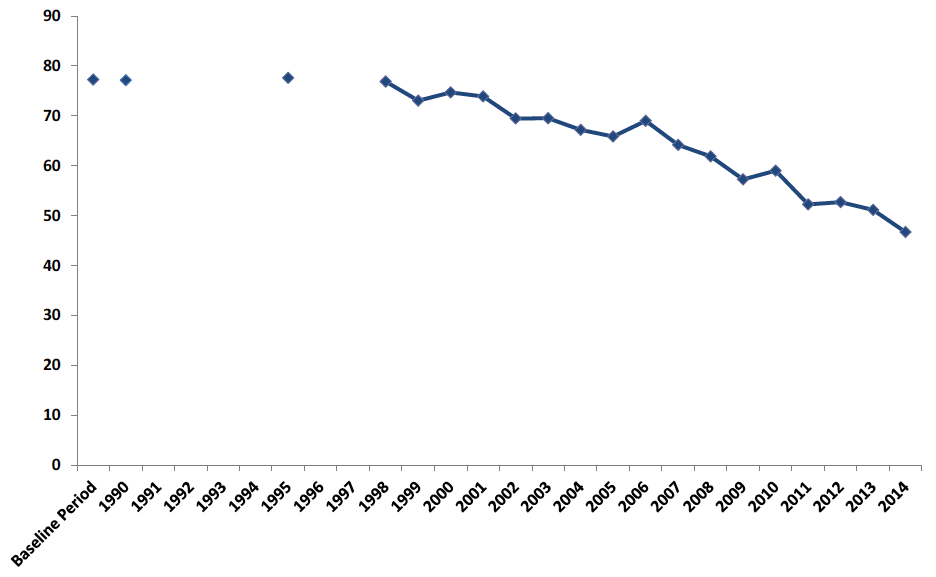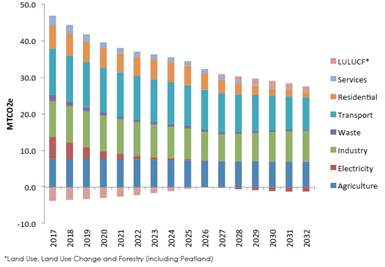Energy & Carbon in Scotland
|
As part of the United Nation's Paris Agreement, which aims to limit global warming by 2°C, Scotland has aimed to reduce the greenhouse gas (GHG) emissions in 2050 by 80% compared to 1990 levels. As a result, Scotland's energy landscape has evolved rapidly since 1990.
There are a number of factors which add to this including advancements in technologies such as improved efficiency in transport and heating boilers as well as significant use of renewable electricity generation, particularly wind. The GHG emissions for Scotland from 1990 to 2014 are shown in the figure to the right, and there is a clear trend in decreasing emissions, with the 2014 emissions relating to a 42% emissions reduction compared to 1990. |
|
The Scottish Government has previously set a target for a 42% reduction in emissions to be achieved by 2020, so the target has been achieved four years earlier than anticipated. As a result of this, the Draft Climate Change Plan (3rd Report), published by the Scottish Government in January 2017, outlines an ambitious target of 66% emission reduction compared to 1990 levels by 2032 (15 years from the when the report was written).
If this can be achieved, Scotland would be world-leading in tackling climate change. This target shows the important role that moving towards a more sustainable and low carbon energy system will play in the near future. The Scottish Government's current strategy to achieve this includes an electricity grid which is wholly decarbonised by 2030 with further deployment of renewables and the implementation of Carbon Capture and Storage. |

